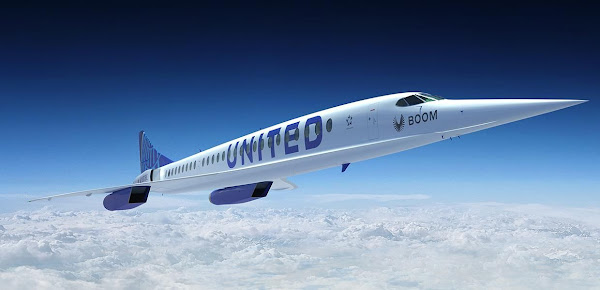The companies working hard now to bring commercial supersonic flight back understand that they have to address sonic-boom noise, one way or another. And the farthest along, Boom Technology, is also taking pains to explain how its planes can be flown with fuels that won’t add to the enormous amounts of carbon that commercial aviation is already spewing into the air.
There are a couple of problems with that logic
, says Dan Rutherford, who is aviation and shipping program director for the International Council on Clean Transportation. First of all, once the plane is out the door, there’s very little control that a manufacturer has over what fuel is used.
What these aircraft manufacturers are contending is that their eventual customers are going to be willing to pay to prevent net carbon emissions. The planes themselves are not going to be fuel efficient
, says Rutherford. He and two colleagues estimated in 2018 that a commercial supersonic airliner like the one Boom is designing would likely use five to seven times as much fuel per passenger-kilometer as a comparable subsonic aircraft.
Rutherford further notes that biomass-derived jet fuels are at least three or four times as expensive as conventional jet fuel and that synthetic jet fuel made from carbon extracted from the atmosphere will be more expensive still. Combine those higher fuel costs with the higher fuel consumption and you start to have such high operating costs for those planes that it is very difficult to see them succeed in the market
, he says.
David Schneider
I have largely skipped past this piece of news last year, as it didn’t seem particularly relevant in the short term, nor particularly likely to materialize in the proposed timeframe. I then listened to a podcast with Kathy Savitt, the President and Chief Commercial Officer of Boom Technology, and my biggest takeaway from that discussions was that they’re working on a new shiny toy for the hyper-rich!

Supersonic flight in itself is hardly an innovation, and the Concorde proved to be a dead-end because of its high fuel and maintenance costs. Cutting travel time across the Pacific in half sounds like a tangible achievement, but how many people would genuinely benefit from a faster trip over these long distances? Long-haul leisure travel is relatively small and infrequent I would assume, and overwhelmingly prefers cheap flights to keep the total costs of the holiday low. Business flights may also decline over the course of this decade, as the pandemic made virtual communication the norm rather than the exception, and the cooling relationship with China will slow investment and reduce economic ties. So that leaves us with only high-end luxury travel, a tiny market with high prices, but I’m not sure it alone will suffice to make these companies into commercial successes.
One positive development I could see from working on these new supersonic designs would be accelerating the adoption of synthetic jet fuels and reducing their manufacturing costs, which would be an improvement for the entire airline industry. Other than that, I fail to see what commercial supersonic flight would achieve other than wasting more fuels for the whims of a tiny minority of spoiled moguls.
Post a Comment